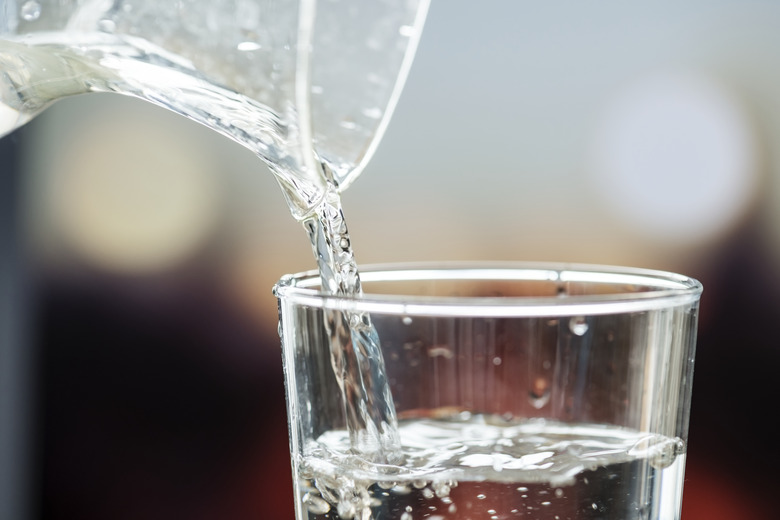What Is Transferred Between A Conjugate Acid Base Pair?
Chemists define conjugate acid-base pairs in terms of the absence or presence of a hydrogen ion or proton. Keeping this in mind, a base becomes a conjugate acid by accepting a proton, and an acid becomes a conjugate base by donating one. Protons transfer between acids and bases and their conjugates.
TL;DR (Too Long; Didn't Read)
Protons (hydrogen ions) transfer between conjugate acids and bases.
About Conjugate Acid-Base Pairs
About Conjugate Acid-Base Pairs
The Bronsted acid-base theory distinguishes acids and bases by the ability of acids to easily give up protons, and for bases to accept them. Another feature of the theory is that acids and bases form what chemists call conjugate pairs; when the acid member of the pair donates a proton, it becomes the conjugate base, and when the base member accepts a proton, it becomes the conjugate acid.
Where Protons Come From
Where Protons Come From
The proton plays a significant role in the chemistry of acids and bases as a sort of ionic "currency," passing back and forth between molecules in solution. In the case of a strong acid that consists of an H+ ion and some negative ion, the proton comes from the acid dissociating into its ionic components in water. In the case of a base, the H+ ion comes from "stealing" a hydrogen from H2O. Note that the idea of free-floating H+ ions is a convenient fiction; they don't actually exist for prolonged periods in water as "naked" protons. Instead, excess hydrogen bonds with water to take the form of the hydronium ion, H3O+.
Examples of Conjugate Acids and Bases
Examples of Conjugate Acids and Bases
When hydrochloric acid (HCl) dissolves in water, it forms the hydronium ion and the chloride ion, Cl-. As an ion, chloride becomes the conjugate base of HCl, and hydronium is the conjugate acid of H2O. Sulfuric acid, H2SO4, has the sulfate ion SO4(2-) as the conjugate base. Sodium hydroxide, NaOH, is a strong base that takes a proton to become a free sodium ion (Na+) and a water molecule, which in this case acts as the conjugate acid. Note that strong acids typically have weak conjugate bases and strong bases have weak conjugate acids.
The Role of Water
The Role of Water
Water plays a few different roles in acid-base reactions. First, it acts as a solvent and dissociates compounds into ions. Next, water molecules absorb free hydrogen ions, forming hydronium. Finally, depending on the reaction, water may become a conjugate acid or base; even though it is technically neutral with a pH of 7, its relative acidity or alkalinity allows it to act as a weak acid or base.
Cite This Article
MLA
Papiewski, John. "What Is Transferred Between A Conjugate Acid Base Pair?" sciencing.com, https://www.sciencing.com/what-is-transferred-between-a-conjugate-acid-base-pair-13712178/. 14 May 2018.
APA
Papiewski, John. (2018, May 14). What Is Transferred Between A Conjugate Acid Base Pair?. sciencing.com. Retrieved from https://www.sciencing.com/what-is-transferred-between-a-conjugate-acid-base-pair-13712178/
Chicago
Papiewski, John. What Is Transferred Between A Conjugate Acid Base Pair? last modified March 24, 2022. https://www.sciencing.com/what-is-transferred-between-a-conjugate-acid-base-pair-13712178/
